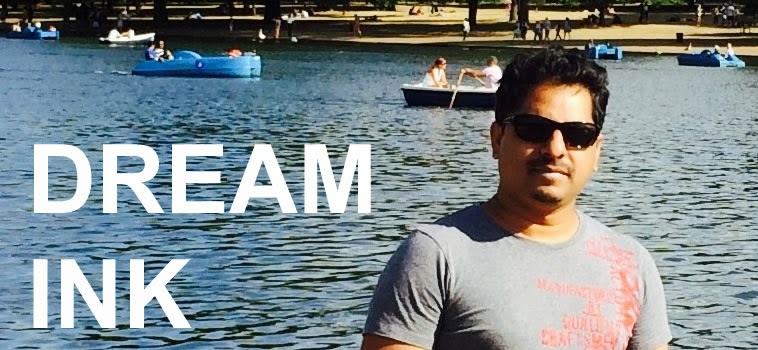My first collection of short stories, The Singapore Decalogue: Episodes in the Life of a Foreign Talent (Red Wheelbarrow Books, 2012) was released in November this year at the Singapore Writers Festival. The book was supported by the National Arts Council Singapore under the Arts Creation Fund grant.
In this collection of short stories, I have tried to create vignettes of life in Singapore. This is my tribute to this city state, which has built its social capital with great wisdom, civic sense, and quotidian practicality.
Like many modern metros, the Lion City is compact, with people of various ethnicity and nationalities living side by side. Though they live mostly secluded, private lives, there are times when their paths cross. This civic commingling of people can be harmonious or chaotic, depending on the circumstances.
In these stories, I have tried to portray the hopes and frustrations of a few interconnected characters (that was truer for the earlier draft when the characters were varied). The bustling metropolis attracts all kinds of people who want to make a life here. What happens to their dreams? What kind of struggles do they go through? Do they feel alienated? What do they love about the city? And so on.
Through the panoply of characters, mainly built around a main character, Asif Basheer, an aspiring poet from India, I have woven together a web of stories that throw light on various contemporary themes. The initial aspiration, following in the footsteps of Tolstoy and the Polish filmmaker Krzysztof Kieslowski (especially his film cycle, The Decalogue), was to explore themes based on the Ten Commandments, but I finally transformed the idea. I was anxious, even afraid, that the stories might come across as too moralistic or formulaic if I went down that route. Nevertheless, my moral concerns about making choices in life still shaped and informed the stories in The Singapore Decalogue.
As I have said elsewhere, more than a writer I am an inspired reader. In terms of actual inspiration behind the stories in this collection, there were many influences—both from life that I have seen from close quarters and from books that I have read over the years. So, in these stories, besides expressing my appreciation of the city and its people, I have also tried to pay my debt to many of my favourite writers and their works that I have benefitted from. The first story, that introduces the main character, is my homage to Fyodor Dostoevsky. In fact, the story begins in the same way as the master’s novel, Crime and Punishment. His protagonist, Raskolnikov, a conflicted and aspiring intellectual, finds a modern day reflection in my main character, Asif Basheer. As the stories unfold, we become privy to Asif’s trials and tribulations and see life in Singapore through his life’s prism. We meet characters who interact with Asif or come into his life. In the earlier version, Asif’s story culminates in a bizarre incident in Boat Quay—Singapore’s commercial heart but that has changed in the final version.
In the original version, the last story summed up the aspects of Asif’s life in epistolary form and it was meant to be my tribute to Gustave Flaubert who wrote some of the most beautiful and passionate letters that I have ever read. In my view, this completed an arch—the first story and the last—as both Dostoevsky and Flaubert were contemporaries in 19th century Europe, and died one year apart (1880 and 1881 respectively). This was how I had tried to connect the past with the present. No matter how times change, people and their hopes and sufferings remain the same. Besides these two great writers, there are stories in the collection that are inspired by the styles of my other favourite writers—James Joyce, Ernest Hemingway and Hanif Kureishi. Initially, my model was Joyce’s Dubliners in which he tried a naturalistic depiction of the Irish middle class life in and around Dublin in the early years of the 20th century. A lot changed from the initial idea but that was what I had in my first draft.
A note of explanation here: by dropping big names (Joyce, Hemingway, et al.) I don’t claim any greatness for myself (how could I?). That would be preposterous and arrogant of me (some have already charged me of being a snob because I don’t like most of the books that are being published today, especially fiction—so I don’t want to aggravate matters here). I am doing that because I want to acknowledge my debt and put on record that I drew inspiration from their works, and that I feel a sense of kinship with them (as many reader would feel towards their favorite writers).
The first draft of The Singapore Decalogue was ready in 2011 and as I started working on the book with my publisher and my editor, the contours of the collection began to change. The publishers had liked the opening story, Crime and Punishment, so much that they wanted to have Asif Basheer, the main protagonist, as the lead in each story. That was not my plan. This meant that I had to drop almost half the stories from the collection and write new ones. I needed some time to do that. By that time, I was also working on my non-fiction book, The Resurgence of Satyam, and had started work on a screenplay. So, there was a hiatus between the first batch of stories that I wrote in 2010-2011 and the later stories that went into the collection. They were written after July 2012.
I still like some of the stories that were dropped from the first draft. Who knows? They might go into The Singapore Decalogue 2.
Copies of The Singapore Decalogue are available at Kinokuniya, Singapore for purchasing and at all branches of National Library Singapore (NLB) for borrowing.











